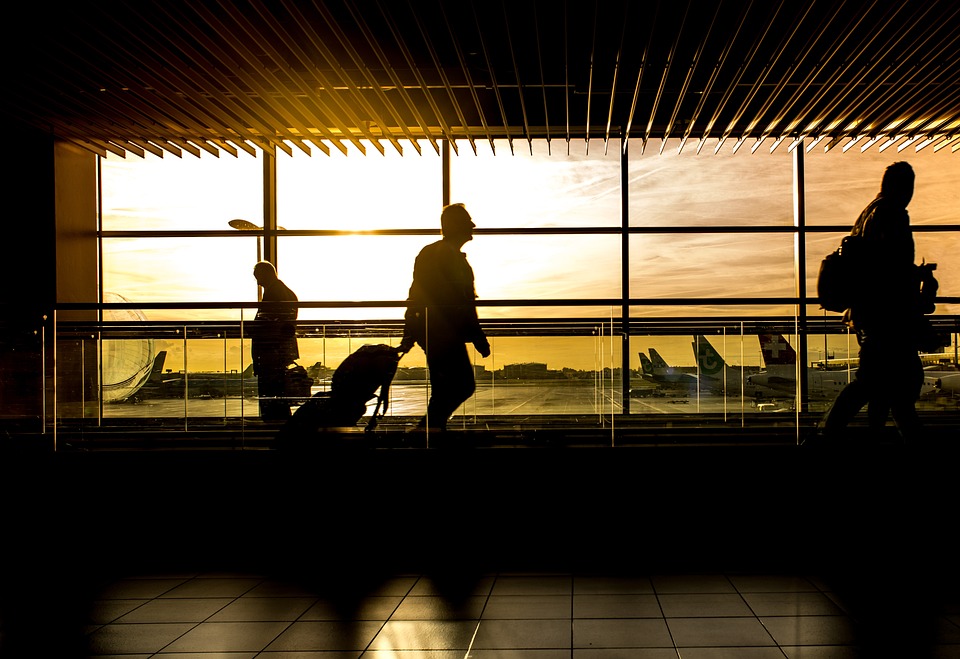The travel industry will explode once the pandemic becomes under control.
The flare-up of Covid-19 and its quick spread around the world have had unprecedentedly affected the travel industry. In spite of the fact that a few airlines are as yet flying, including rescue flights to send individuals out to their nations of origin, numerous airlines have all but shut down until further notice. Not only airlines but hotels and lodgings are laying off workers by several thousand. Even cruise lines were stuck adrift for quite a long time. Travelers are scrambling to cancel their trips and get a refund. To put it plainly, the travel industry has never faced such panic, change, and disturbance on this scale.
Looking for insights about how Covid is probably going to change the manner in how we travel later on. Some specialists in the fields of aeronautics, hospitality, cruising, finance, and even the study of disease transmission, provided some projections and predictions. The one thing that practically every one of them said to expect is much more uncertainty for quite a while to come.
Incredible discount deals are ON for those brave enough – Airfare will get more expensive later this year
The director of the Global Logistics and Transportation Program at the College of Charleston, Kent Gourdin, was asked, will commercial airfares rise this year? He replied, “I don’t think so,” “Airlines are simply trying to put people into seats.”
Let’s be clear: you definitely won’t get on an airplane anytime soon unless it’s completely necessary. Let’s be clear: you definitely won’t get on an airplane anytime soon unless it’s completely necessary. The new coronavirus, also known as the COVID-19 virus, is spreading by the minute, not only infecting people (over 114,000,000 as of this writing) but also transforming the way we travel.
Commercial airfares may decrease rather than increase in price, according to some experts.
Kerry Tan, an associate professor of economics at Loyola University Maryland who specializes in the airline industry, said, “Given the strong decline in demand, I don’t expect airlines to have the market power to raise prices.” “Instead, I anticipate airlines to offer steep discounts and sales to promote air travel.”
Some domestic destinations are increasingly opening up within the Philippines for recreational travel, but with restrictions and minimum health requirements observed. Check this page for a list of destinations that have reopened.
Last June 2020, referring to a local survey report issued by the agency, Romulo-Puyat said, 77 percent of Filipino respondents regarded that they are as yet willing to travel for leisure regardless of the absence of a COVID-19 vaccine. Within six months from the lifting of travel restrictions, 48% of this number are willing to travel.
That said, it appears to be likely that people will be encouraged back by airlines’ slashing seat prices. However, basic economics will imply that airlines will eventually have to charge more to stay alive.
Philippine local airlines – AirAsia & Cebu Pacific Airlines offered PISO fare promo in the last 2 months of 2020 respectively, to help the domestic tourism industry recover from the major setbacks caused by the COVID-19 pandemic. The budget airlines said the latest promo offering would help stimulate air travel as domestic tourism started to show positive signs of recovery, in conjunction with various plans of the distribution of the COVID-19 vaccine. The “travel bubbles” adapted by local government units such as Boracay and Bohol would give more security of having strict health and safety protocols in place as travelers can return to many of their favorite destinations.
The Piso Sale is the Airline’s regular seasonal campaign that aims to further boost domestic travel. The super-low fares are also expected to entice more travelers.
Many industry professionals expect the long-awaited upturn in leisure and family travel in most global regions to kick off in mid-2021, at which stage a recovery will begin.
Air travel will slowly reopen first to domestic markets
According to Atmosphere Research Group, global travel specialists, the recovery timeline will gradually stretch out for two full years after COVID-19 is stated as being “under control”. They also concur with other forecasters and industry executives in that the recovery will be a gradual return rather than a fast bounce-back, and led by domestic travel.
Avionics master Henry Harteveldt of Atmosphere Research Group said, “You can anticipate that aircrafts should start with trips out of their most significant centers and urban areas where general ailments are ideal and request is most grounded.”
In the Philippines, as of the second month of 2021, Local airlines’ operations are still below 30 percent of the pre-pandemic levels due to the local restrictions imposed. The Association of Asia Pacific Airlines (AAPA) asked the government, earlier, to relax travel restrictions and quarantine requirements to help the aviation sector restart and recover from the severe impact of the coronavirus pandemic.
Benefitting from the timely relaxation of internal travel restrictions in some countries, AAPA noted a recovery in domestic travel. They also mentioned, the traffic in September 2020 reaching 67 percent of what it was a year ago while domestic capacity is already at 80 percent.
Before the much-awaited reopening of the Philippines’ tourism, the department is thinking to create “travel bubbles” which will allow travelers to visit select destinations in the country from places with low to zero coronavirus cases.
Currently, the tourism department is looking into collaborating with Australia and New Zealand.
The DOT secretary, Ms. Bernadette Romulo-Puyat, mentioned, “We will still be fixing the safety protocols because again, the main concern of tourists now–domestic and international–is whether it is safe. We will first open up the destination that is safe with virtually zero COVID cases and number two, we will check the health protocol.”
She said DOT is now in discussions with its Australian partners. The department is also working on direct flights from Australia to the “safe” and virtually “COVID-free locations” that will soon be open in the Philippines.
This initiative is also supported by Senator Sonny Angara who mentioned that aside from Australia and New Zealand, other neighboring countries such as Thailand, Singapore, China, South Korea, Vietnam, and Japan are also exploring the concept of “travel bubbles” to revive the tourism industry.
Paving travel corridors is the only way to instill confidence in travelers to book that flight.
Travelers will focus on fitness, wellbeing, and nutrition
This pandemic is, first and foremost, a health issue, and it has changed travelers’ preferences. Travelers will likely value more the importance of good health than before. A survey conducted by Traveloka, a lifestyle and travel platform, found that confidence in traveling had increased but that people had become more conscious of health and safety. Travelers will be more cautious in the future.
During the virtual Philippines Health and Wellness Forum 2020, Tourism Assistant Secretary Roberto Alabado III, said, “The DOT right now is looking at health and wellness tourism as one of the niche products that the Philippines can really count on once we recover from this coronavirus disease.“
Some experts also predict a rise in wellness travel, with people realizing now, how important and valuable good health is. There will be a big interest for travelers wanting to stay in places where you can improve your mental and physical wellbeing.
For the near future, hotel offerings may change a piece. Below are some examples of which wellness-related points and amenities to highlight in able to attract post-pandemic travelers.
- Spa & Wellness Services
- Onsite & Nearby Outdoor Activities
- Staycations Focused on Self-Care
- Nutrition-Based Menus
Business Travel will not return to 100%
There is no doubt that after almost a year of working more from home, companies now understand that they can function without anyone traveling for meetings or conferences; it will save them a huge amount in business expenses. What this means is that a massive decline in business air travel is going to occur.
The Wall Street Journal estimated that from pre-pandemic peaks, post-pandemic business travel would decline by 37 percent. According to what Bill Gates quoted in CNBC, he predicted a 50% decline, claiming, “the coronavirus will fundamentally alter the way people travel for and conduct business, even after the pandemic is over.”
Work travel represented 21 percent of the $8.9 trillion spent on leisure and tourism internationally in 2019. The World Travel and Tourism Council provided this information.
Ed Bastian, the CEO of Delta Airlines, told The Associated Press, “I do think corporate travel is going to come back faster than people suspect. I just don’t know if it will come back to the full volume.” Delta expects a 60% to 65% percent decrease in first-quarter sales relative to the same time last year, nearly equivalent to the 65% drop in the fourth quarter.
Although business travel continues to recover from the pandemic, the long-term business travel strategies will be greatly impacted by the experiences companies have had with remote work. Business travel will be back but at a lower peak. The new normal of virtual collaboration and communication is here, and this time it’s staying.
However, most importantly, we will travel again.
Despite the discomfort unfurling far and wide, with every country shut to the rest of the world, all the travel and tourism experts had the certainty that travel will be back and be as rewarding as could be expected. While the experience may look and feel unusual once the world starts to reopen and tourism starts to resume, individuals can expect a groundbreaking and positive effect of travel to change their own lives and the places they visit for the better. We simply hope that starts to happen again sooner rather than later.









0 Comments